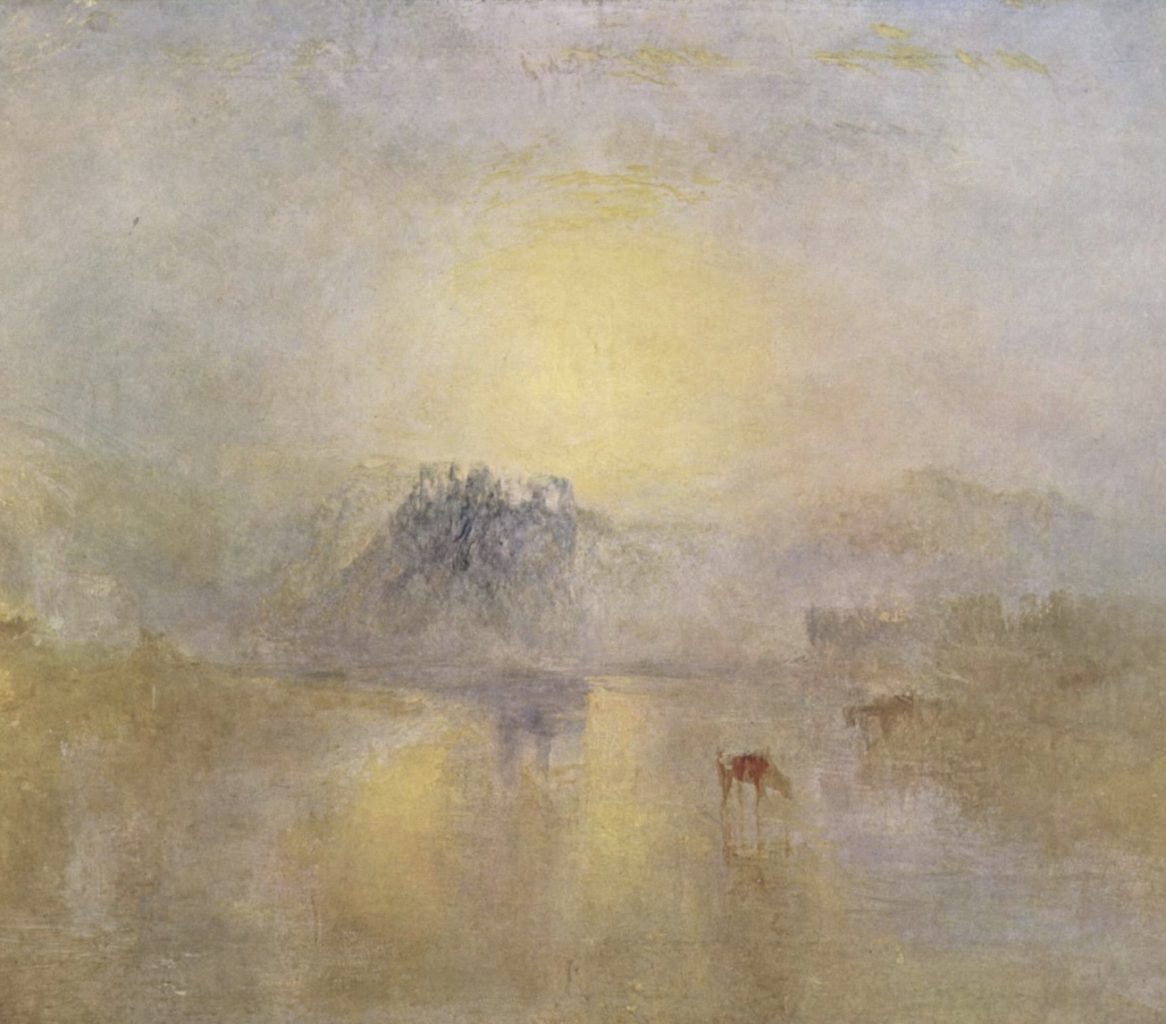Sunrise, sunset, and J. M. W. Turner’s book of hours.

That voice, at the start, could have stopped with the light, left heaven and earth glad in its glow. But so lithe was light’s beauty, so playful its touch, that the voice quickly conjured the rest of creation, indulging light’s longing for things to caress.
❦
The years we make, through breath and memory, but what we are given is the day. And, as the minister who narrates Marilynne Robinson’s luminescent novel Gilead sees, our days are not as various as the years make them appear: “. . . it has all been one day, that first day. Light is constant, we just turn over in it. So every day is in fact the selfsame evening and morning.”
The medieval monastics who created the Divine Office celebrated this gift, dividing the day into the canonical hours, defining each hour by prayer. Through their devotions, it was light that led them, and not time. Matins, Lauds, Prime, Terce, Sext, None, Vespers, Compline—each hour encompassed a band of light, mirroring the perceptible changes of the day’s illumination. In the silence of a cloister, the noise of time was quiet too, its metaphorical ticking washed in the chants that, from Matins through Compline, praised the light and marked our turning in it.
Those thoughts, culled from an essay I wrote some years ago, returned to me after viewing, at the Mystic Seaport Museum, a majestic exhibition of the art of J. M. W. Turner, in which more than four score paintings from Tate Britain were on display, catching light in all its glory.
❦
“The sun is god” said the artist in his last days, at least as reported by John Ruskin, who may have been mythologizing, but with characteristic imaginative precision. Whatever Turner’s faith, his work reverenced the lingering constancy of creation, illuminated in the hours he sang in his work, from sunrise to sunset and back again.